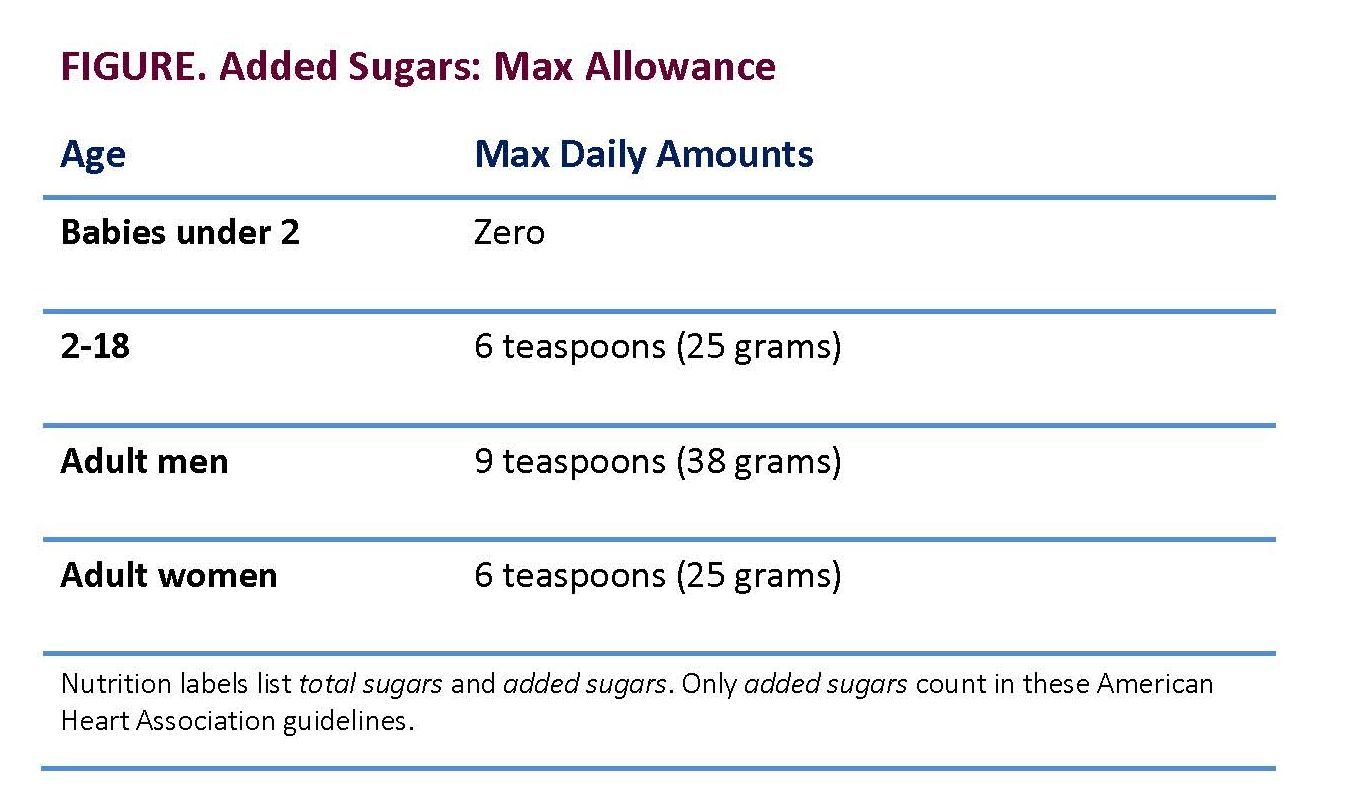Article
High-fructose Corn Syrup Implicated in Mania
Author(s):
Results of a recent study have implications for adolescents, who are the top consumers of this artificial sweetener.

FIGURE. Added Sugars: Max Allowance

RESEARCH UPDATE
Adolescent rats display manic behavior when given free-access to high-fructose corn syrup, according to a recent study in the British Journal of Pharmacology.1 The results have implications for adolescents, who are the top consumers of this artificial sweetener.
To interpret the findings, it helps to understand what mania looks like in rats. In this animal model, the manic-like rats were:
1. Risk-takers. Instead of holding back in the sheltered area of a high-rise maze, they ventured out into the structure’s plank-like arms. One high-fructose consumer did something the investigators had never seen before: He jumped off the plank.2
2. Hypersexual. When given the opportunity, they spent more time sniffing the pheromone-rich urine of ovulating female rats.
3. Hyperactive and hyperconfident. While most rats fear open spaces, these restless souls were more likely to explore in an open field.
True to the model of bipolar disorder, the rats had extremes of mood in both directions. When placed in a tub of water that they could not escape from, they were more likely to stop trying, a measure of behavioral despair called the forced swim test.
Impulsive, hyperactive, and prone to depression-so far, this looks like bipolar disorder, but just because they have similar symptoms does not mean they share the same disease pathways. The investigators explored those connections in two ways, with in vivo electrodes in living rats, and through hippocampal changes in the deceased.
The results were consistent with the pathophysiology of bipolar disorder: dysfunctional Na/K ATPase (NKA) enzymes, increased glutamatergic signaling, and neuronal hyperexcitability. The manic symptoms were reversed by inhibition of GSK-3B, which is thought to be responsible for lithium’s mood-stabilizing effects.
My first impression was that the rats must have been given a hefty dose of sugar to elicit these behavioral extremes. Not so. Their sugary water was calibrated to resemble the free access to sodas that have become a staple of the teenage diet. The time-span of sugar-exposure corresponded with the brief childhood and adolescence of an average rat: four weeks.
Adolescents are particularly vulnerable to the metabolic effects of high-fructose corn syrup. Those include obesity, insulin resistance, and systemic inflammation, all of which were seen in the sugar-fed rats.
Previous research has connected high-fructose corn syrup to depression, anxiety, and cognitive decline. This new paper adds bipolar disorder to that list, at least in Wistar Albino rats. For ethical reasons, we are unlikely to see a controlled study of this type in humans, but we do not need to wait for that type of confirmation to advise families. You will be in good company. The American Heart Association, World Health Organization, and American Pediatric Association all recommend that physicians take an active role in educating patients about the health risks of high-fructose corn syrup and other added sugars (see Figure).
Dr Aiken is Instructor in Clinical Psychiatry at the Wake Forest University School of Medicine and the Director of theMood Treatment Center in Winston-Salem, NC. He is Editor in Chief ofThe Carlat Psychiatry Reportand Bipolar Disorder Section Co-Editor for Psychiatric Times.
Disclosures:
Dr Aiken does not accept honoraria from pharmaceutical companies but receives royalties from W.W. Norton & Co. for a book he co-authored with James Phelps, MD, Bipolar, Not So Much.
References:
1. Alten B, Yesiltepe M, Bayraktar E, et al. High-fructose corn syrup consumption in adolescent rats causes bipolar-like behavioural phenotype with hyperexcitability in hippocampal CA3-CA1 synapses.Br J Pharmacol, 2018;175:4450-4463.
2. Baris Alten, personal communication, 2019.






